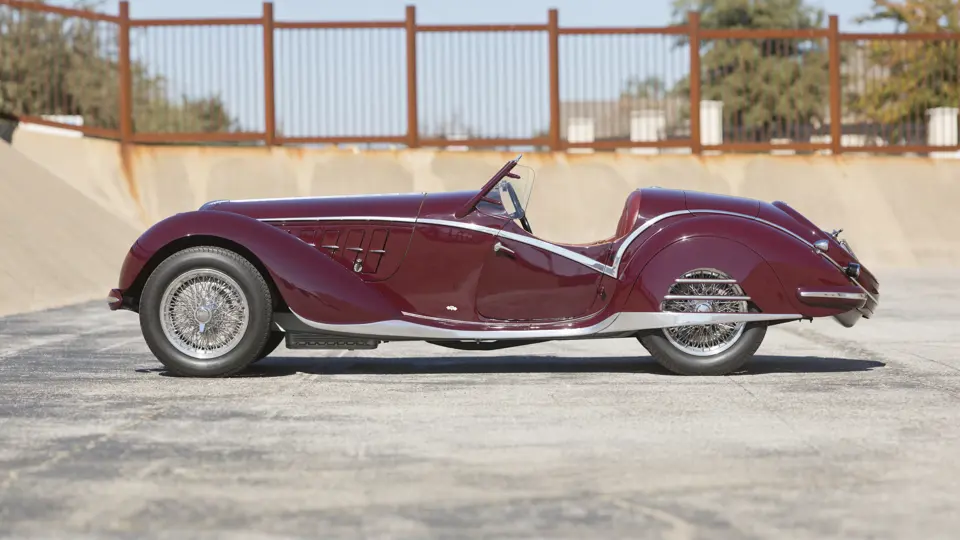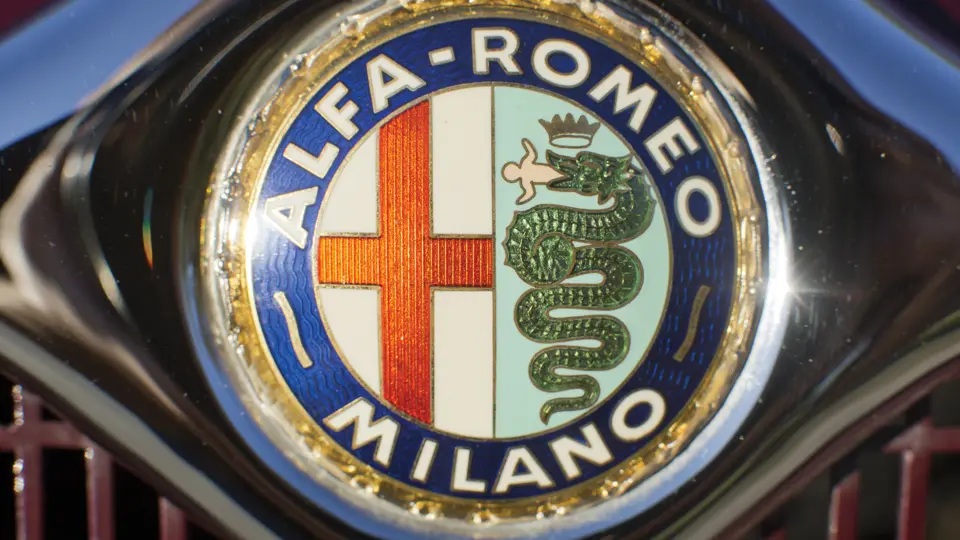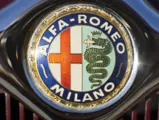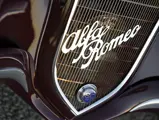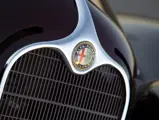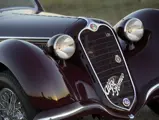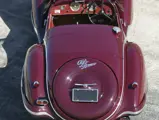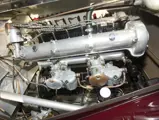76 hp, 2,309 cc double overhead camshaft inline six-cylinder engine, four-speed manual gearbox, four-wheel independent suspension, and four-wheel hydraulic disc brakes. Wheelbase: 3,000 mm
• Ex-Bill Jacobs and Gene Ponder
• Beautifully executed coachwork to concours standards
• Built for showing and touring with ease and style
In the twenties and thirties, Alfa Romeo was equivalent to today’s Ferrari, and more, it was supplying not only competitive rides for the best drivers, but also a steady stream of beautifully engineered and constructed cars for private entrants.
When the company, which employed thousands of artisans, mechanics, and functionaries to build only a few cars, encountered the inevitable financial difficulties, it was bailed out by the state. Instead of being directed to downsize and build saleable automobiles to generate cash flow and keep those thousands employed, Italy directed Alfa to build great racing machines to demonstrate Italy’s technology and competitiveness on Europe’s race courses. Production shrank, but the few cars that were built were the best in the world.
Alfa Romeo’s racing history came into its own when Anonima Lombarda Fabbrica Automobili, along with its chief engineer, Giuseppe Merosi, came under the control of Nicola Romeo in 1915. After the First World War, Merosi designed the RL and, with it, a sports version that won the Targa Florio, the Circuito di Cremona, and the Coppa della Consuma in 1924. The RL was a commercial success: over 2,600 were built from 1922–1928, Alfa’s most successful single model for the next generation. Merosi followed the RL with a Grand Prix design, the P1—a 1,990-cubic centimeter dual overhead camshaft six-cylinder that failed to show much pace.
Nicola Romeo, flushed with success in other fields, dispatched a young employee, Enzo Ferrari, to poach a promising designer from Fiat to augment Merosi’s skills. Ferrari succeeded in his mission, bringing Vittorio Jano to Alfa’s works at Portello and establishing the groundwork for two decades of Grand Prix and sports car racing domination by Alfa Romeo.
Jano immediately began work on a new GP car, the 1,987-cubic centimeter supercharged dual overhead camshaft eight-cylinder P2, which won its first race at the Circuito di Cremona in 1924 and went on to dominate GP racing through 1925. Commercial expediency then intervened, and Jano was assigned the design of a new Alfa Romeo road car.
In a time when automobiles were exotic and often idiosyncratic creations, the products of Alfa Romeo were finely crafted works of art, elegant in conception and executed with due regard to combining function with exquisite form. Virtually every important piece was produced in-house in Alfa’s fabrication shop, pattern works, foundry, and machine shop. The product of artisans, each of whom took pride in the performance, reliability, quality, execution, and appearance of his separate creation, these Alfas also reflected the overall responsibility of engineer Jano who continually tested, evaluated, and improved their performance until they met his high, and growing, standards.
Debuting at the 1925 Milan Auto Show, the 6C 1500 set new standards for lightweight, high performance road cars. Its production was delayed for over a year by another round of financial contretemps, during which Nicola Romeo ceded control of his industrial complex to an Italian state-owned organization, the Istituto di Liquidazione. Introduced with a single overhead camshaft, Jano had provided for a twin-cam head in the original design, and it was introduced in 1928, followed by the slightly larger 1752-cubic centimeter 6C 1750 in 1929. The 6Cs were the mainstay of Alfa production during the period, being fitted with everything from lightweight spider coachwork from Zagato and Touring to full size sedans by Castagna and Alfa’s own coachworks.
The next evolution of the 6C came in 1934, and although traditional in its layout, the 6C 2300 had nearly twice the displacement of the car it succeeded. Accordingly, it was a highly competent automobile capable of providing excellent performance with multi-passenger coachwork.
The 2,309-cubic centimeter engine in the 6C 2300 featured a one-piece crankcase/cylinder block and an aluminum alloy cylinder head. Camshaft drive was by a combination of roller chain and gears. Designed for performance without the complication and expense of superchargers, the 6C 2300 delivered 68 horsepower in turismo form. The 6C 2300B, introduced in 1938, offered up to 95 horsepower in the corto, or short wheelbase, chassis.
The chassis itself was built around boxed section frame rails and, unusual for its market niche, featured fully independent suspension. Its brakes were composed of large drums with aluminum cooling fins shrunk around them, which was very effective for the time and, like the engine, showed Alfa’s continuing emphasis on performance.
The sporting character of the new 6C was demonstrated by competition success, first in the Mille Miglia in 1937, where Giovanbattista Guidotti, who had apparently learned well from previous Mille Miglia co-drives with Nuvolari and Mussolini’s chauffeur Ercole Boratto, finished 4th overall, behind the Two-Nines of Pintacuda and Farina and the Delahaye of Schell. Guidotti’s drive in the 6C 2300 earned Alfa the important “National Touring” class laurels.
The 6C 2300B chassis is known for its nimble and precise handling, and it is even more responsive in the short wheelbase form. Its fully-independent suspension is at the same time compliant and comfortable, making it the ideal vehicle for tours and events. Enjoyment and satisfaction is assured by this example’s high performance 110 horsepower and the long stroke six’s smoothness and torque. Although any 6C 2300B is a pleasure to own and drive, this example’s beautiful coachwork puts it in the company of the finest and most exquisite coachbuilt classics, a standout in any display, vintage race meet, or tour. This is a classic Alfa Romeo that will bring pride and satisfaction to its owner.
The beautiful Alfa Romeo presented here is an exceptionally good-looking example with coachwork in the style of Touring. From information gathered from several different enthusiast sources and clubs, the Alfa was delivered new as a short chassis saloon. In the 1980s, it was rebodied with this new coachwork, which includes a number of Touring design trademarks, including the slotted rear fender skirts and the rakish dipped chrome body molding, which was used on many Touring bodies and ultimately portended the famous Flying Star roadster bodies, which were built on several different chassis. It is understood that upon completion, 813219’s European owner toured the car extensively on various events, including the Mille Miglia retrospective.
Noted collector and enthusiast Mr. Bill Jacobs later imported the car to the U.S. and set upon restoring it. He refinished the attractive coachwork in the period-correct dark red color it displays today. Additionally, chrome spears were added to the rear fenders and spats, increasing its outstanding presence. While this car would have originally been fitted with a single carburetor, it has been updated to the more desirable dual carburetor setup that one would normally find on a 2300B Mille Miglia chassis. The upgrade to this higher specification further increases the Alfa’s excellent touring capabilities.
The car later passed from Gene Ponder to the present owner, whose shop went through the car extensively to ensure that it is in fine running and driving condition. Cosmetically, the Alfa Romeo is virtually perfect; it shows little to no wear throughout and is clean and well detailed from the engine and bay to its rear end. The lovely tan and color-matched piped leather interior is also clean and well detailed, and it complements the exterior color perfectly. This Alfa is lithe, proportionately perfect, and utterly beautiful. Rarely does a rebody surpass the original; however, in this case, it does so with exceptional grace, looks, and performance.
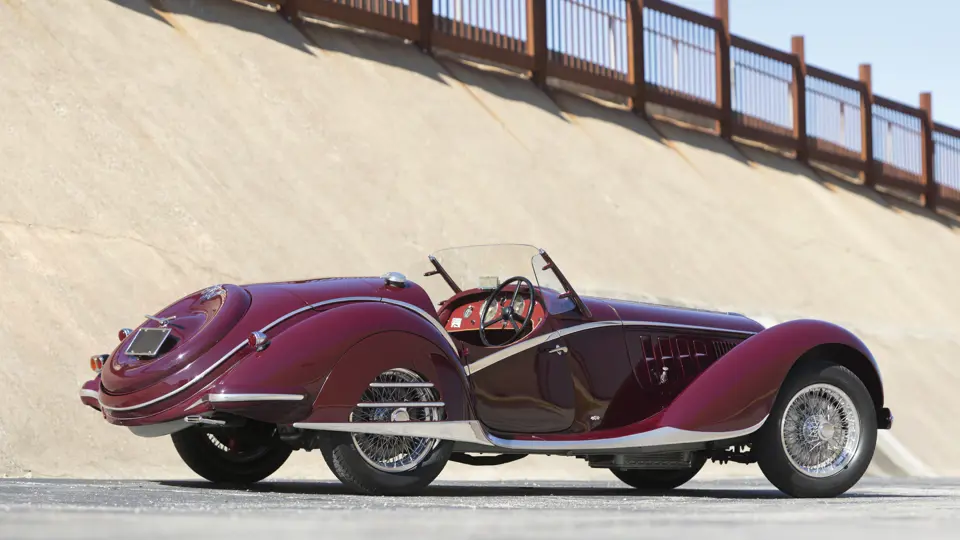

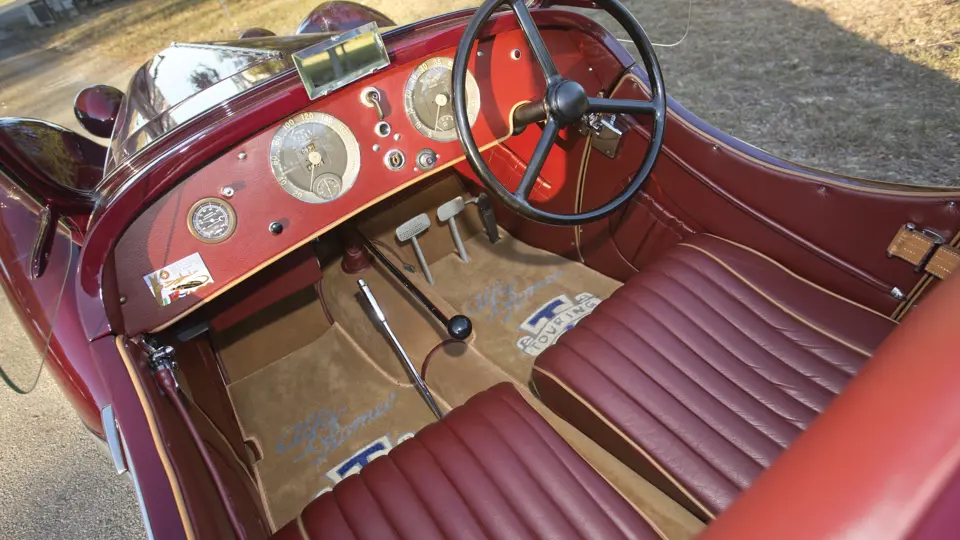


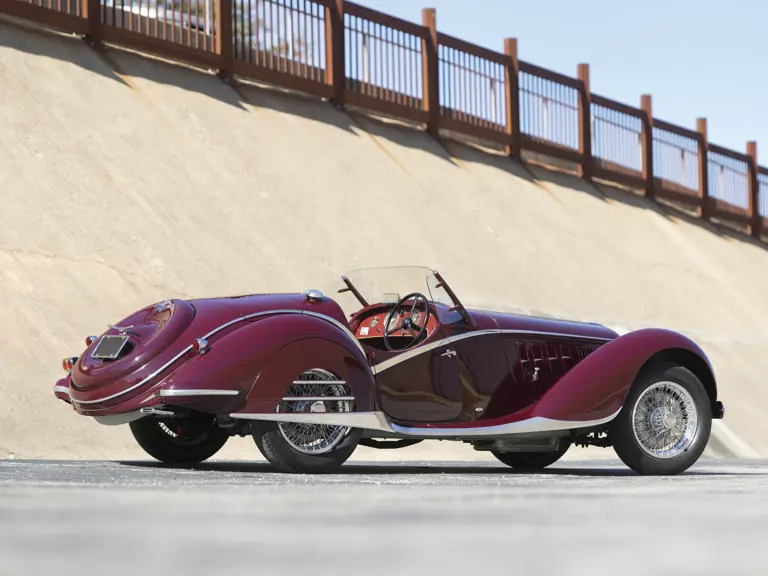

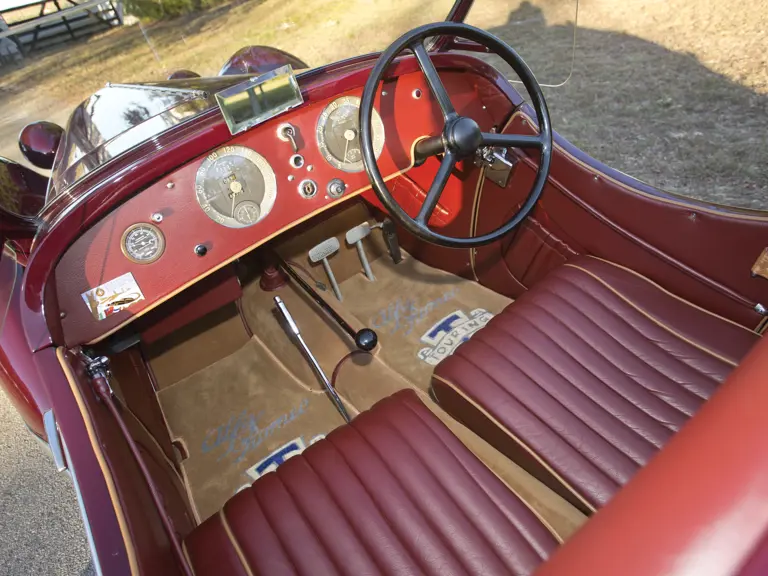
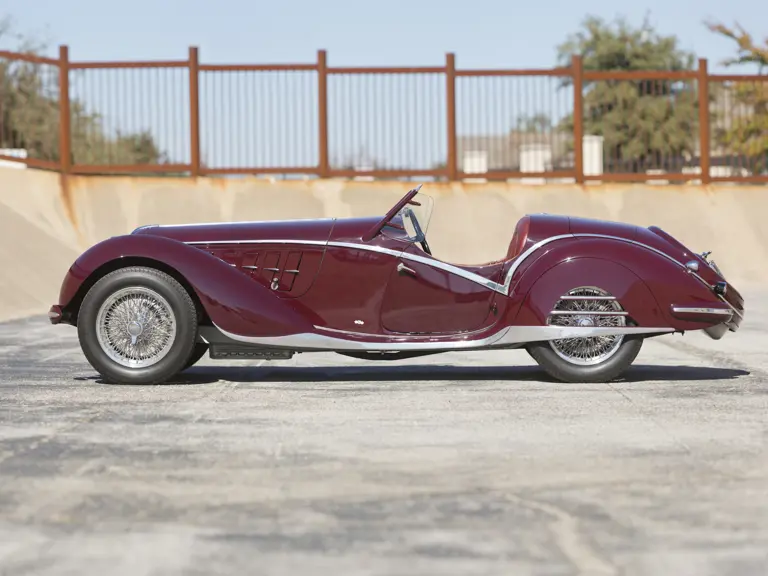
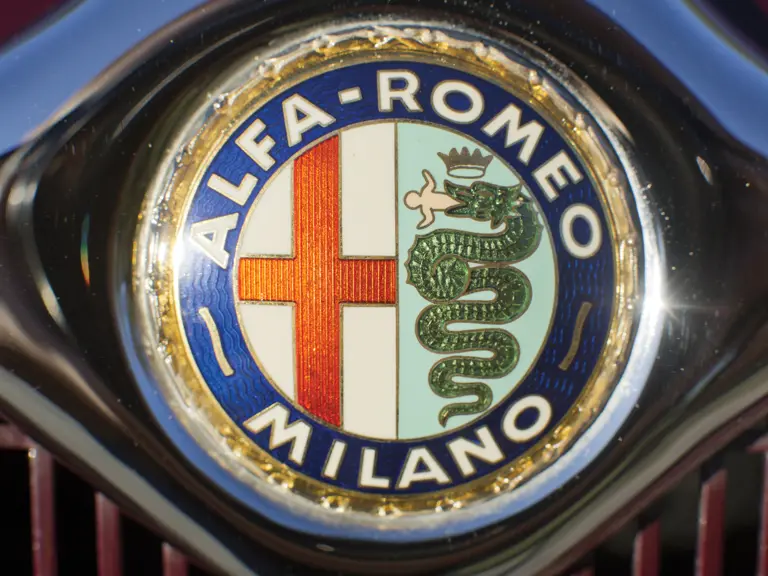
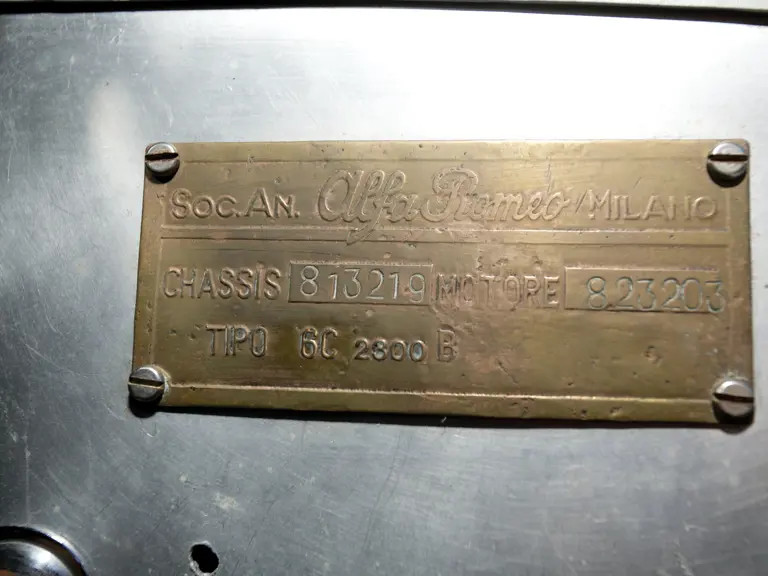
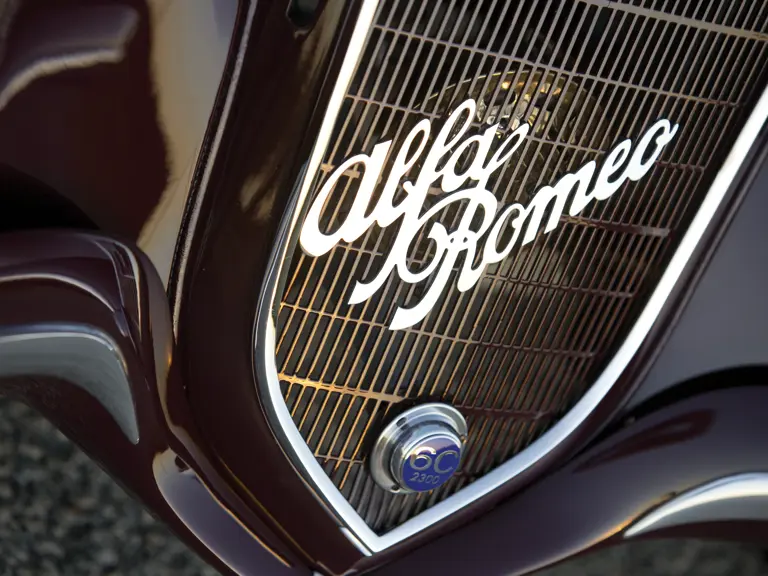

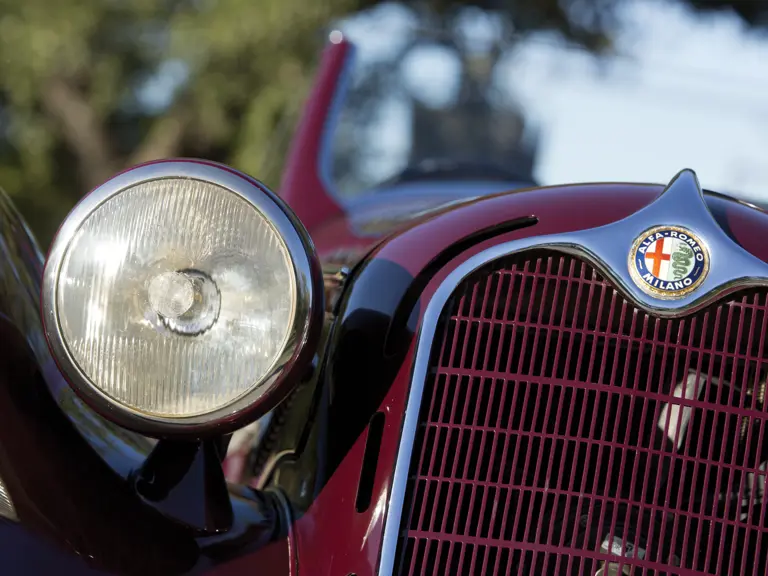

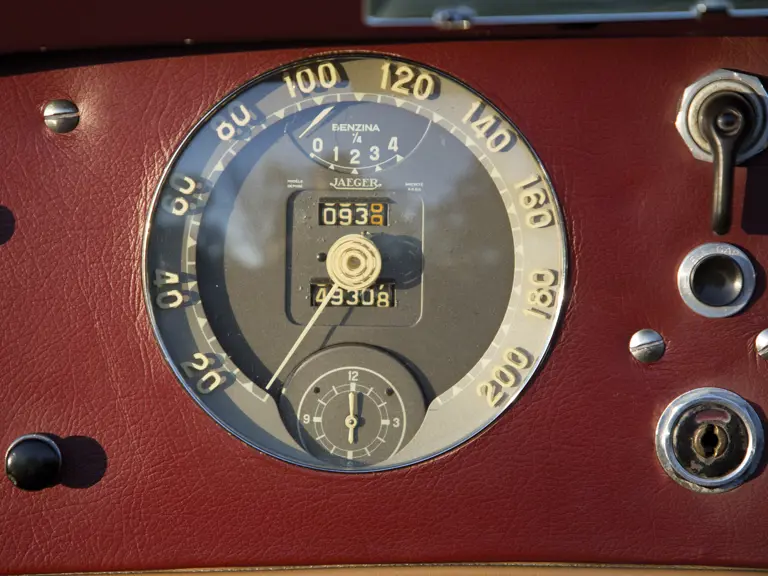

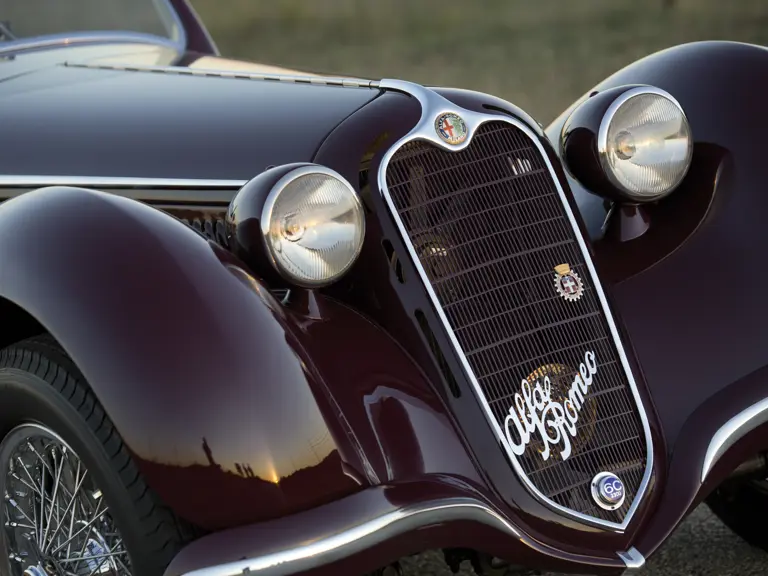


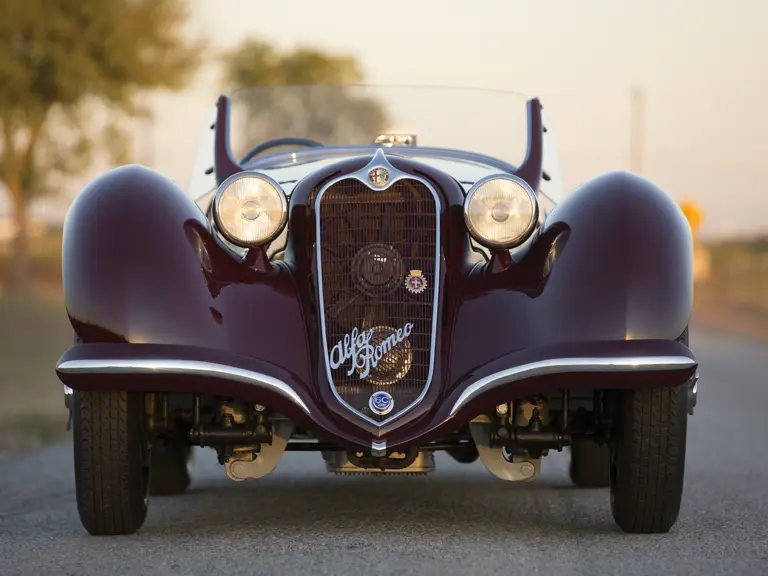
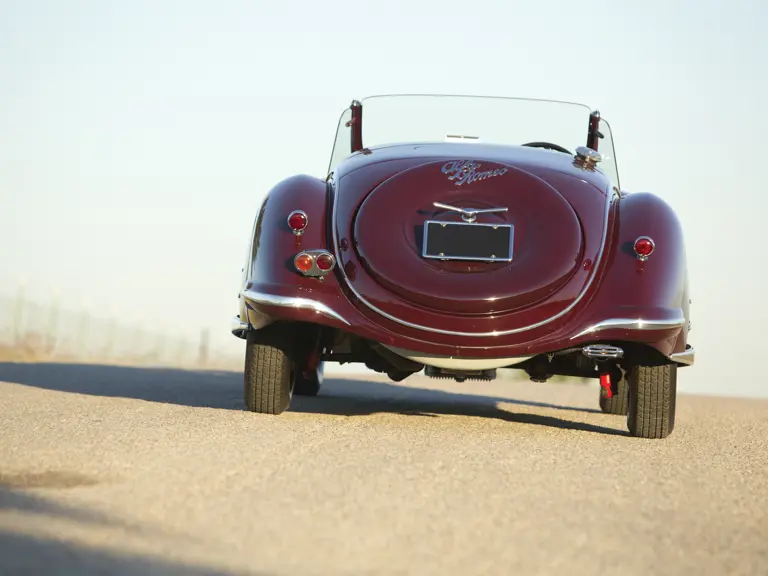
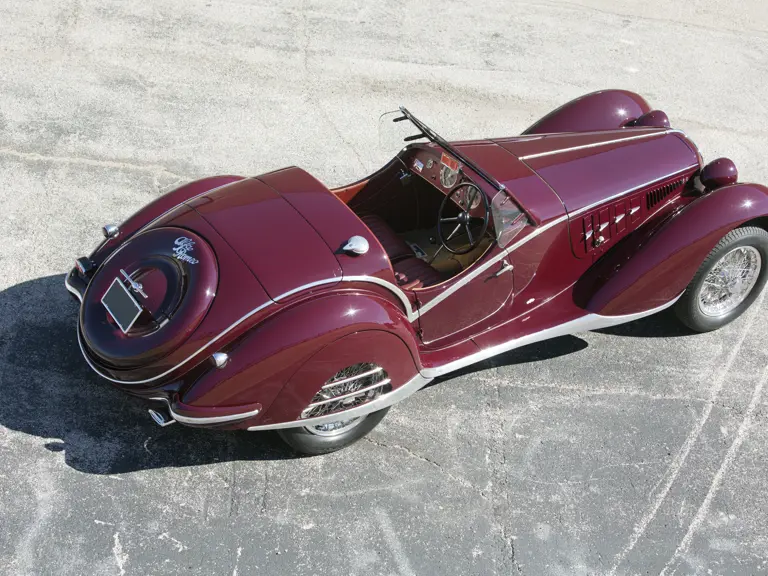

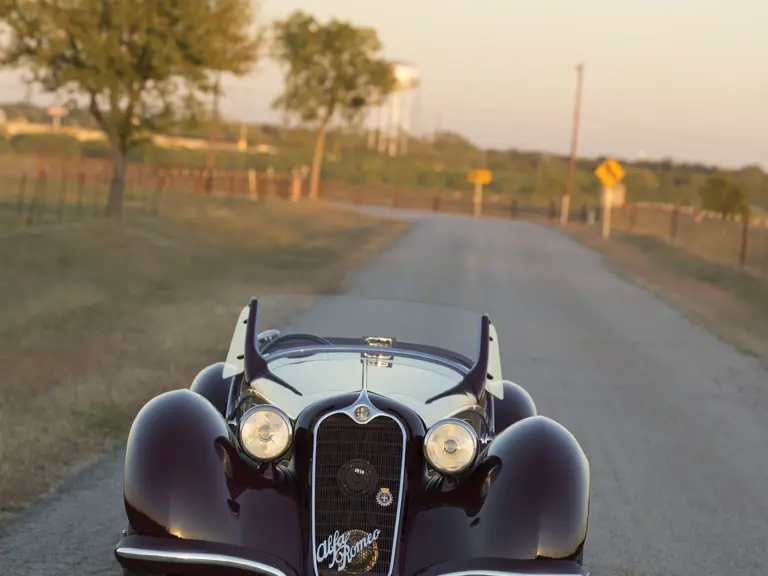
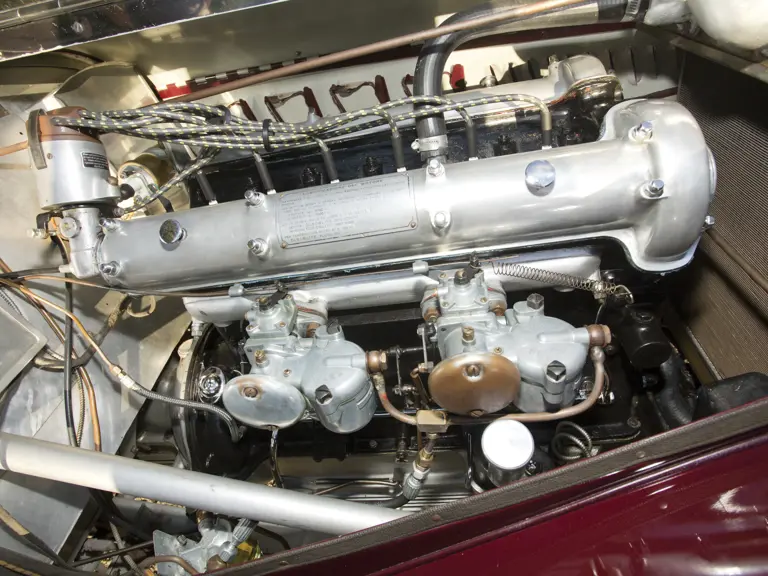

 | Phoenix, Arizona
| Phoenix, Arizona
